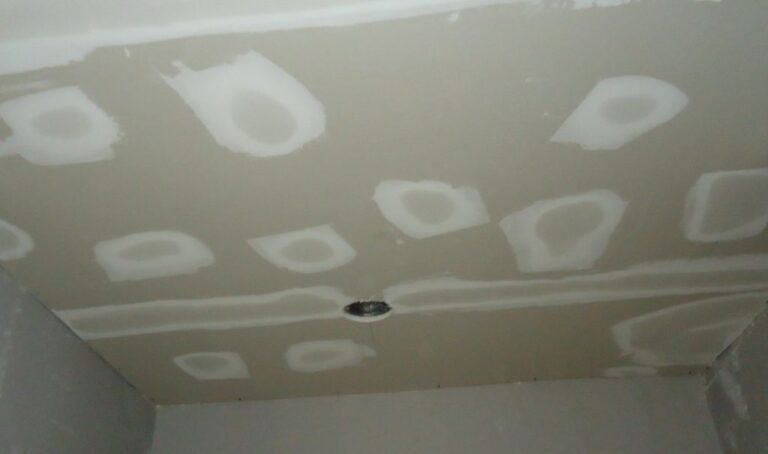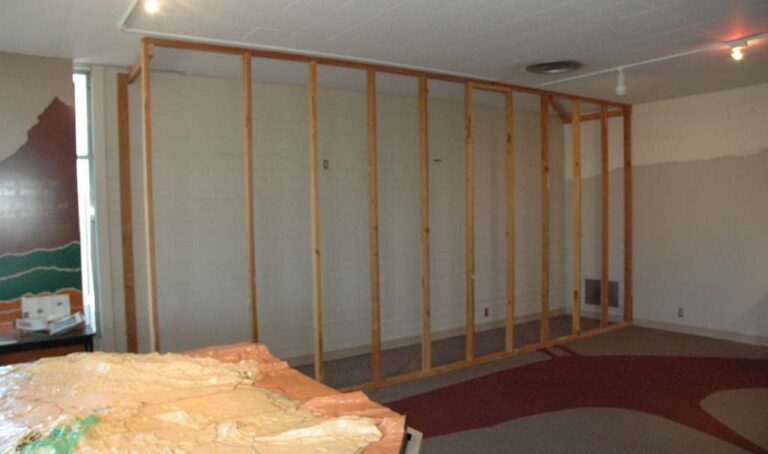Can Drywall Be Stored in The Attic? Feasibility and Potential Risks
Is your drywall need a decent place to be stored but you don’t know which place might be the best? What about the Attic? Can Drywall Be Stored in The Attic?
The answer is Yes or No. Storing drywall in the attic poses risks due to moisture, weight, and accessibility issues. With proper you can store the drywall in the attic up to some extent. Renting a climate-controlled external facility is also an option.
Well, the answer is confusing there is still hope to use the Attic as a storage option for your drywall. Read the further blog post to clear all your doubts in a few minutes.
Importance of Storing Drywall Correctly
You’ve got a shiny new stack of drywall, ready to unleash your creativity and transform your living space. But hold your hammers for a moment! Storing drywall properly is the key to maintaining its integrity and ensuring your future DIY projects go off without a hitch.
When we store drywall correctly, we safeguard it from the evils of warping, cracking, and crumbling. Trust me, you don’t want your beautiful sheets resembling an accordion or turning into a pile of dust. By treating your drywall with care, you ensure that it’s ready to shine when you’re ready to start your next project.
Now, I know what you’re thinking, “Ashu, just tell me the secret! How can I keep my drywall in tip-top shape?” Well, my friend, fear not. In this guide,
I’ll spill the beans on the ideal storage conditions for drywall and share some tips and tricks to keep your materials as sturdy as a superhero. So grab your cape, let’s dive in, and preserve the superhero powers of your drywall sheets!
Ideal Storage Conditions for Drywall
Let’s dive into the magical realm of ideal storage conditions for our beloved drywall. Picture this: a land where drywall sheets bask in the perfect environment, free from the clutches of warping, cracking, and crumbling. It’s a utopia we all aspire to create, and today, I shall be your guide to this magical land of drywall preservation.
Read this helpful article if you would like to know the suitability of drywall compound on concrete surfaces. Can You Use Drywall Compound on Concrete?
First things first, my friends. Drywall, like any superstar, demands a dry and cool environment to maintain its structural integrity. Excessive humidity or extreme temperature fluctuations are its kryptonite. So, find a space that protects your drywall from the villainous forces of moisture and heat.

But wait, there’s more! Drywall also thrives in an area with good ventilation. It needs fresh air like we need our morning coffee. Proper airflow helps prevent the buildup of moisture, ensuring your drywall remains as crisp as a freshly ironed shirt. So, don’t suffocate those poor sheets; let them breathe!
Now, let’s talk specifics. When it comes to humidity levels, your drywall wants to stay in a sweet spot—around 35% to 55%. Too dry, and it might turn into the Sahara Desert. Too humid, and you’ve got yourself a swamp party. So, grab a handy-dandy hygrometer and monitor those humidity levels like a pro.
But where, oh where, shall we find this ideal storage space? Look no further than your basement. It’s a hidden gem, a treasure trove of coolness and stability. The basement’s natural insulation and consistent temperature make it a drywall’s dream home. Just be sure to keep it organized, so you don’t end up playing hide-and-seek with your drywall sheets.
Ah, but what about the attic, you ask? My curious DIY comrades, the attic can be a tricky beast. It may seem tempting, with its vast space and sense of adventure, but beware of its dark secrets. Attics can be a battleground for temperature and humidity fluctuations, making it a risky choice for storing drywall. So, unless you’re prepared for potential warping and moisture damage, it’s best to steer clear.
A drywall sheet, lounging on a beach chair, sipping a piña colada, and basking in the cool breeze of the basement. It’s the perfect getaway for our drywall superhero (Yes the Drywall sheets can be reusable too). So, create that oasis of storage bliss for your drywall, and it will reward you with walls that would make Picasso jealous.
Remember, my DIY enthusiasts, the secret to preserving the strength and beauty of drywall lies in providing the ideal storage conditions. Embrace the magic of a dry and cool environment, with just the right amount of ventilation. Whether it’s the basement, the garage, the attic, or a dedicated drywall storage space, choose wisely, and your drywall will thank you.
1 Assessing Space Availability of Attic
The mystical realm of the attic! It beckons us with promises of hidden treasures and secret hideaways. But before we unleash our drywall dreams upon this enchanting space, let’s assess its availability for storage. After all, we don’t want our drywall sheets to feel cramped or claustrophobic up there.
- First things first, let’s consider the dimensions of your attic. Is it spacious enough to accommodate those glorious sheets of drywall? Measure the area, account for any obstacles like beams or ductwork, and ensure you have ample room for your storage adventure.
- Next, let’s talk access. Can you reach your attic with ease, or is it a treacherous climb fit for only the most nimble of souls? If it’s accessible and you can transport your drywall without risking life and limb, then you’re one step closer to attic storage glory.
- Take a moment to evaluate the attic’s floor structure. Can it handle the weight of your drywall stash without collapsing like a house of cards? Consult a professional if you’re unsure about the structural integrity, because nobody wants a drywall avalanche on their hands.
It’s a daring adventure, my friends, one that will test your DIY prowess and your attic’s suitability for storing drywall.
2 Attic Temperature and Humidity Considerations
First and foremost, let’s talk about temperature. Attics can turn into saunas during scorching summers and chilly iceboxes during frigid winters. Extreme temperature changes can wreak havoc on your drywall, causing warping, cracking, and an all-around grumpy drywall situation. So, it’s crucial to ensure your attic is well-insulated and properly ventilated to maintain a more stable temperature environment.
Now, onto the mischievous culprit known as humidity. Attics, with their sneaky leaks and condensation traps, can sometimes harbor excess moisture. And we all know what moisture does to drywall—it’s like the arch-nemesis that causes mold growth, peeling and general sadness.
Keep a vigilant eye on your attic’s humidity levels and address any moisture issues promptly. Dehumidifiers and proper insulation can be your trusty sidekicks in this battle against moisture.
3 Attic Ventilation and Air Circulation
Ah, the sweet breath of fresh air! Attic ventilation and air circulation are the unsung heroes in the realm of drywall storage. Proper airflow in the attic ensures a healthy environment for your beloved drywall sheets. Let’s shed some light on this vital topic, shall we?
Good attic ventilation allows for the exchange of stale air with fresh air, reducing the chances of moisture buildup and stagnant conditions. Vents, soffits, and ridge vents are your allies in this quest for optimal air circulation. Ensure they are clean and unobstructed, allowing air to flow freely through your attic.
Furthermore, proper air circulation helps in maintaining a consistent temperature, preventing hotspots or cold pockets that can affect your drywall’s integrity. Consider installing fans or using natural airflow patterns to keep the air moving and the drywall happy.
Potential Risks
While storing drywall in the attic can be convenient, we must tread cautiously, my fellow DIY enthusiasts. Let’s explore some potential hazards that may arise:
- Moisture and Mold Damage: Attics can be a breeding ground for moisture, leading to mold growth that can wreak havoc on your drywall’s health and appearance. Vigilance and proper moisture control are essential.
- Weight and Structural Considerations: Drywall is not the lightest material (It can even hold a TV), and stacking too much of it in the attic can put stress on the structure. Ensure your attic’s weight-bearing capacity is up to the task.
- Accessibility and Safety: Attics often pose challenges in terms of accessibility and maneuverability. Be mindful of safety measures while storing and retrieving drywall, avoiding any potential accidents.
Knowledge is power, By understanding these potential risks, you can take the necessary precautions to mitigate them and ensure a successful drywall storage experience in your attic. Stay vigilant and keep your drywall safe from harm!
Alternative Storage Options
While storing drywall in the attic may seem like a tempting option, it’s essential to explore alternative storage solutions that can offer better protection and convenience. Here are a few alternatives to consider:
- Garage or Shed- If you have a garage or shed with enough space, it can be an ideal location to store drywall. Ensure the area is well-ventilated and protected from moisture.
- Basement- The basement can provide a cool and dry environment for storing drywall. Make sure the area is free from leaks and humidity.
- Dedicated Storage Room– If you have the luxury of extra space, consider designating a specific room for drywall storage. This allows for better organization and easier access when needed.
- External Storage Facility– If you have limited space at home, renting an external storage facility can be a viable option. Look for a facility that offers climate-controlled units to protect your drywall from temperature and humidity fluctuations.
Remember, the goal is to store drywall in a location that provides adequate protection from moisture, temperature changes, and other potential risks. Assess your available space and choose the option that best suits your needs. With the right storage solution, you can ensure your drywall remains in pristine condition until it’s time for your next DIY project!






